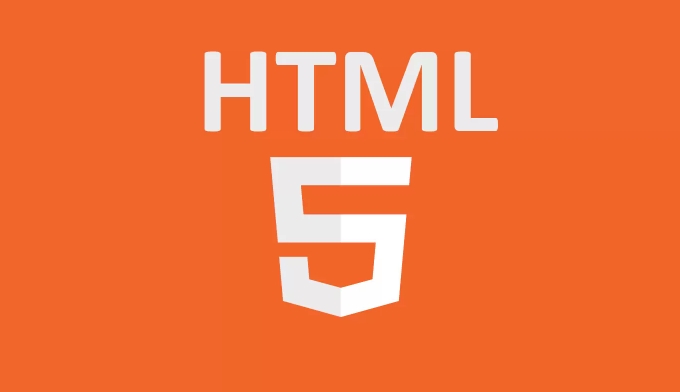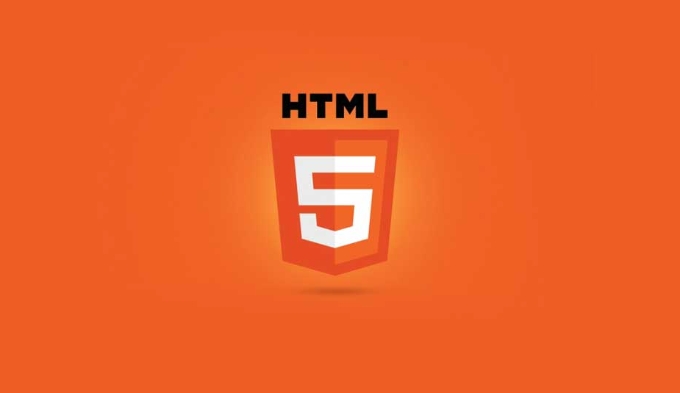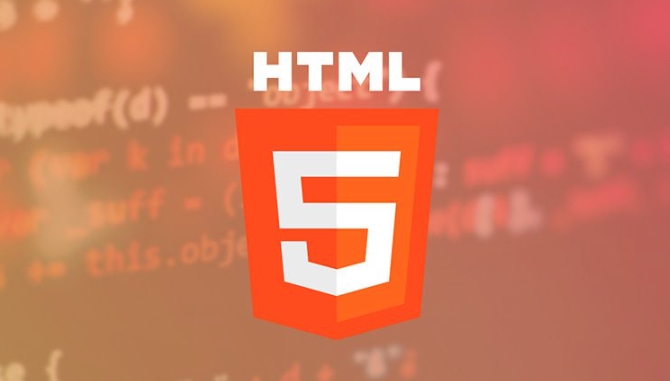Receiving real-time data with HTML5 Server-Sent Events (SSE).
Jul 02, 2025 pm 04:46 PMServer-Sent Events (SSE) is a lightweight solution provided by HTML5 to push real-time updates to the browser. It realizes one-way communication through long HTTP connections, which is suitable for stock market, notifications and other scenarios. When using it, create an EventSource instance and listen for messages: const eventSource = new EventSource('/stream'); eventSource.onmessage = function(event) { console.log('Received message:', event.data); }; The server needs to set Content-Type to text/event-stream, keep the connection open, and output data: content\n\n in the format. Common considerations include: 1. Configure CORS to solve cross-domain problems; 2. Control retry time to achieve automatic reconnection; 3. Use event: Define custom event types; 4. Manage connection timeout to prevent resource leakage. Compared with WebSocket, SSE is simpler and easier to use, supports HTTP protocol to penetrate the firewall, but is only unidirectional communication and has slightly poor compatibility. It is suitable for real-time push scenarios without frequent interactions.

In web development, if you need to push real-time updates from the server to the browser, HTML5 provides a lightweight solution: Server-Sent Events (SSE). Compared with WebSocket, it is simpler and easier to implement, and is especially suitable for scenarios where only servers need to communicate one-way to clients.

What are Server-Sent Events?
Server-Sent Events is part of HTML5, allowing servers to push data to the browser over HTTP long connections. Unlike traditional polling methods, SSE will remain open after establishing a connection, and the server can send new data at any time, such as stock quotes, real-time notifications or chat messages.

Its basic usage is to create an EventSource instance and point to a URL on the server side:
const eventSource = new EventSource('/stream');
eventSource.onmessage = function(event) {
console.log('Received message:', event.data);
};As long as the server continues to send data, the client can continue to receive it.

How to set SSE support on the server side?
Different backend languages ??have different implementation methods, but the core point is the same: keep the connection open and output the content in the SSE format.
Take Node.js Express as an example:
app.get('/stream', (req, res) => {
res.setHeader('Content-Type', 'text/event-stream');
res.setHeader('Cache-Control', 'no-cache');
// Simulate sending data setInterval(() => {
res.write(`data: ${new Date()}\n\n`);
}, 1000);
});Key points:
- Set the correct response header, especially
text/event-stream - Don't end the response too early, keep the connection open
- The data format must be
data: 內(nèi)容\n\n, and two newlines indicate the end of a message
Other languages ??such as Python (Flask), PHP, or Java Spring Boot can be implemented similarly.
Frequently Asked Questions and Notes
1. Cross-domain issues If the front-end and back-end are not under the same domain name, CORS needs to be configured to ensure that the request initiated EventSource is allowed:
Access-Control-Allow-Origin: *
Or specify a specific domain name.
2. Automatic reconnect mechanism When the connection is interrupted, the browser will automatically try to reconnect, and the default waiting time is 3 seconds. You can control this interval on the server side:
retry: 5000
3. Custom event type In addition to the default onmessage , you can also define other event names:
event: update
data: {"type": "news", "content": "New news is coming"}Front-end monitoring:
eventSource.addEventListener('update', function(event) {
console.log('Update received:', event.data);
});4. Connection timeout and resource release Be careful not to let the connection hang indefinitely. The server should have mechanisms to detect whether the client is disconnected and release resources in time to avoid memory leakage.
When should I use SSE instead of WebSocket?
WebSocket is more powerful and supports two-way communication, but also has higher complexity. If you only need the server to push information to the client and do not need frequent interactions, SSE is a better choice.
Advantages include:
- Simplify the development process, easy to implement both front and back ends
- Support automatic reconnection
- The standard HTTP protocol can be used to make it easier to penetrate the firewall
The disadvantages are also obvious:
- Only one-way communication from server to client is supported
- Browser compatibility is slightly poor (IE and older versions of Edge are not supported)
Basically that's it. SSE is not complicated, but in actual deployment, you should pay attention to connection management, error handling and performance optimization. If you just want to make a simple real-time notification system, SSE is a lightweight and practical choice.
The above is the detailed content of Receiving real-time data with HTML5 Server-Sent Events (SSE).. For more information, please follow other related articles on the PHP Chinese website!

Hot AI Tools

Undress AI Tool
Undress images for free

Undresser.AI Undress
AI-powered app for creating realistic nude photos

AI Clothes Remover
Online AI tool for removing clothes from photos.

Clothoff.io
AI clothes remover

Video Face Swap
Swap faces in any video effortlessly with our completely free AI face swap tool!

Hot Article

Hot Tools

Notepad++7.3.1
Easy-to-use and free code editor

SublimeText3 Chinese version
Chinese version, very easy to use

Zend Studio 13.0.1
Powerful PHP integrated development environment

Dreamweaver CS6
Visual web development tools

SublimeText3 Mac version
God-level code editing software (SublimeText3)

Hot Topics
 What Does H5 Refer To? Exploring the Context
Apr 12, 2025 am 12:03 AM
What Does H5 Refer To? Exploring the Context
Apr 12, 2025 am 12:03 AM
H5referstoHTML5,apivotaltechnologyinwebdevelopment.1)HTML5introducesnewelementsandAPIsforrich,dynamicwebapplications.2)Itsupportsmultimediawithoutplugins,enhancinguserexperienceacrossdevices.3)SemanticelementsimprovecontentstructureandSEO.4)H5'srespo
 Is h5 same as HTML5?
Apr 08, 2025 am 12:16 AM
Is h5 same as HTML5?
Apr 08, 2025 am 12:16 AM
"h5" and "HTML5" are the same in most cases, but they may have different meanings in certain specific scenarios. 1. "HTML5" is a W3C-defined standard that contains new tags and APIs. 2. "h5" is usually the abbreviation of HTML5, but in mobile development, it may refer to a framework based on HTML5. Understanding these differences helps to use these terms accurately in your project.
 Is H5 a Shorthand for HTML5? Exploring the Details
Apr 14, 2025 am 12:05 AM
Is H5 a Shorthand for HTML5? Exploring the Details
Apr 14, 2025 am 12:05 AM
H5 is not just the abbreviation of HTML5, it represents a wider modern web development technology ecosystem: 1. H5 includes HTML5, CSS3, JavaScript and related APIs and technologies; 2. It provides a richer, interactive and smooth user experience, and can run seamlessly on multiple devices; 3. Using the H5 technology stack, you can create responsive web pages and complex interactive functions.
 H5 and HTML5: Commonly Used Terms in Web Development
Apr 13, 2025 am 12:01 AM
H5 and HTML5: Commonly Used Terms in Web Development
Apr 13, 2025 am 12:01 AM
H5 and HTML5 refer to the same thing, namely HTML5. HTML5 is the fifth version of HTML, bringing new features such as semantic tags, multimedia support, canvas and graphics, offline storage and local storage, improving the expressiveness and interactivity of web pages.
 Understanding H5 Code: The Fundamentals of HTML5
Apr 17, 2025 am 12:08 AM
Understanding H5 Code: The Fundamentals of HTML5
Apr 17, 2025 am 12:08 AM
HTML5 is a key technology for building modern web pages, providing many new elements and features. 1. HTML5 introduces semantic elements such as, , etc., which enhances web page structure and SEO. 2. Support multimedia elements and embed media without plug-ins. 3. Forms enhance new input types and verification properties, simplifying the verification process. 4. Offer offline and local storage functions to improve web page performance and user experience.
 What does H5 mean?
Apr 04, 2025 am 12:10 AM
What does H5 mean?
Apr 04, 2025 am 12:10 AM
H5 is the abbreviation of HTML5 and is the fifth version of HTML. H5 enhances the structure and semantics of web pages, and introduces new features such as video, audio, canvas drawing and geolocation APIs, making web page development richer and more efficient.
 HTML5: The Standard and its Impact on Web Development
Apr 27, 2025 am 12:12 AM
HTML5: The Standard and its Impact on Web Development
Apr 27, 2025 am 12:12 AM
The core features of HTML5 include semantic tags, multimedia support, offline storage and local storage, and form enhancement. 1. Semantic tags such as, etc. to improve code readability and SEO effect. 2. Simplify multimedia embedding with labels. 3. Offline storage and local storage such as ApplicationCache and LocalStorage support network-free operation and data storage. 4. Form enhancement introduces new input types and verification properties to simplify processing and verification.
 HTML5 and H5: Understanding the Common Usage
Apr 22, 2025 am 12:01 AM
HTML5 and H5: Understanding the Common Usage
Apr 22, 2025 am 12:01 AM
There is no difference between HTML5 and H5, which is the abbreviation of HTML5. 1.HTML5 is the fifth version of HTML, which enhances the multimedia and interactive functions of web pages. 2.H5 is often used to refer to HTML5-based mobile web pages or applications, and is suitable for various mobile devices.






